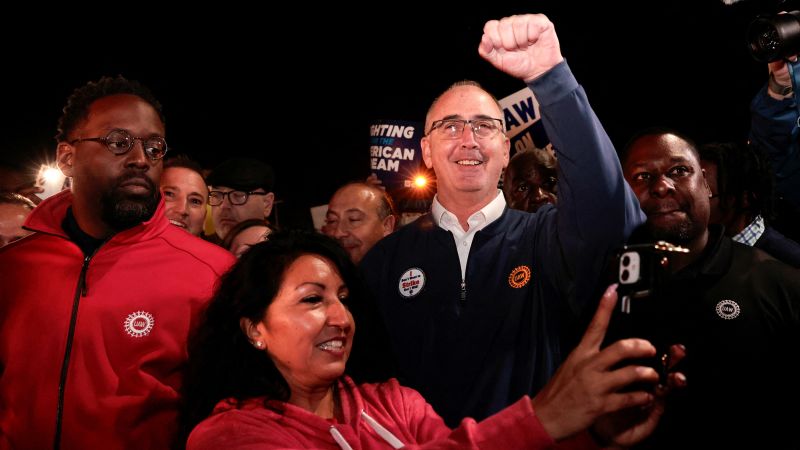UAW President Shawn Fain has become the X factor in the striking autoworkers’ pursuit of increased pay and benefits, injecting a level of chaos into negotiations that neither the automakers nor the White House predicted or quite know how to manage.
That confusion is purposeful.
The UAW on Friday struck at just three plants, one at each of the Big Three automakers. None of the plants is particularly crucial to the automakers’ operations, surprising industry insiders – even experts who predicted the UAW would implement a targeted strike.
Nevertheless, the strike marks the first time in history the UAW has struck at all three automakers simultaneously. Fain told union members Thursday that the union’s strike strategy “will keep the companies guessing” and give union negotiators “maximum leverage” when they return to the bargaining table.
He said that by striking those plants, the UAW reserves the option to increase the size and scope of the strike, ordering more workers off the job at plants that could be more disruptive to automakers’ operations – including transmission or engine factories, which supply those crucial parts to plants around the country.
Automakers have lambasted the UAW chief, calling the union’s demands unreasonable. Ford CEO Jim Farley on Thursday told CNN that the union’s call for a 40% pay raise and a 32-hour, four-day work week would bankrupt the company. GM CEO Mary Barra on Friday said the union is “asking for more than the company made,” calling the demands unrealistic. And GM and Stellantis lashed out at Fain late last month for his surprising tactic of filing unfair labor practice charges with the National Labor Relations Board, accusing GM and Stellantis of not bargaining in good faith.
Just as Fain’s hefty demands and unique strike method were designed to maximize leverage with the automakers, his lack of deference to the White House added pressure on pro-union President Joe Biden.
Fain said the union would withhold its endorsement of Biden. Although Fain has at times praised Biden, he has also criticized the president for failing to do enough to help the autoworkers in their cause. The UAW routinely supports Democratic presidential candidates, and the president – who is fighting low approval ratings ahead of the 2024 campaign season – could use all the support he can get.
The unpredictable and unknown commodity in Fain has created a “uniquely challenging” predicament for the Biden administration, according to three sources briefed regularly on the discussions, who requested anonymity to describe sensitive conversations during ongoing negotiations.
Fain isn’t backing down.
“If we need to go all out, we will,” he told members last night. “We must show the companies you are ready to join the … strike at a moment’s notice. And we must show the world our fight is a righteous fight.”
With glasses and a receding hair line, Fain, 54, doesn’t necessarily look like a rabble rouser. But he is not afraid of strong rhetoric, even by the standards of labor leaders, attacking the “billionaire class” and “corporate greed.”
These are not Fain’s first set of negotiations. He’s been on negotiating committees before. But it’s the first time he’s led the union.
At the end of last year, he was an underdog candidate from the UAW staff running against the long-entrenched but scandal-ridden caucus that had led the union for decades.
Fain comes from Kokomo, Indiana, a blue collar city in central Indiana that is surrounded by farm land. Multiple plants there produce much of the engines and transmissions that go into Stellantis cars and trucks. Three of his four grandparents worked at auto plants.
Fain was hired at what was then a Chrysler plant as an electrician in 1994. He served in a variety of union offices at the local level and became a national negotiator during the 2009 bankruptcy at Chrysler and again during contract negotiations in 2011. In 2012, he went on staff at the UAW.
His run for office last year was his first on the national level. Fain finished second in the first vote, with 38%, but only 600 votes behind Curry, or less than 1%. Since Curry had failed to get a majority, a runoff vote was held in the spring. This time Fain edged out Curry by less than 500 votes.
“There was a lot of shock when he won,” said Art Wheaton, director of labor studies at Cornell University’s School of Industrial and Labor Relations in Buffalo. Even with the close result in the initial round of voting, Fain caught the ruling caucus of the union “flat-footed,” said Wheaton.
“I don’t think they were as in tune with membership and how frustrated people were with both the companies and the union,” Wheaton said.
Read the full article here













Leave a Reply